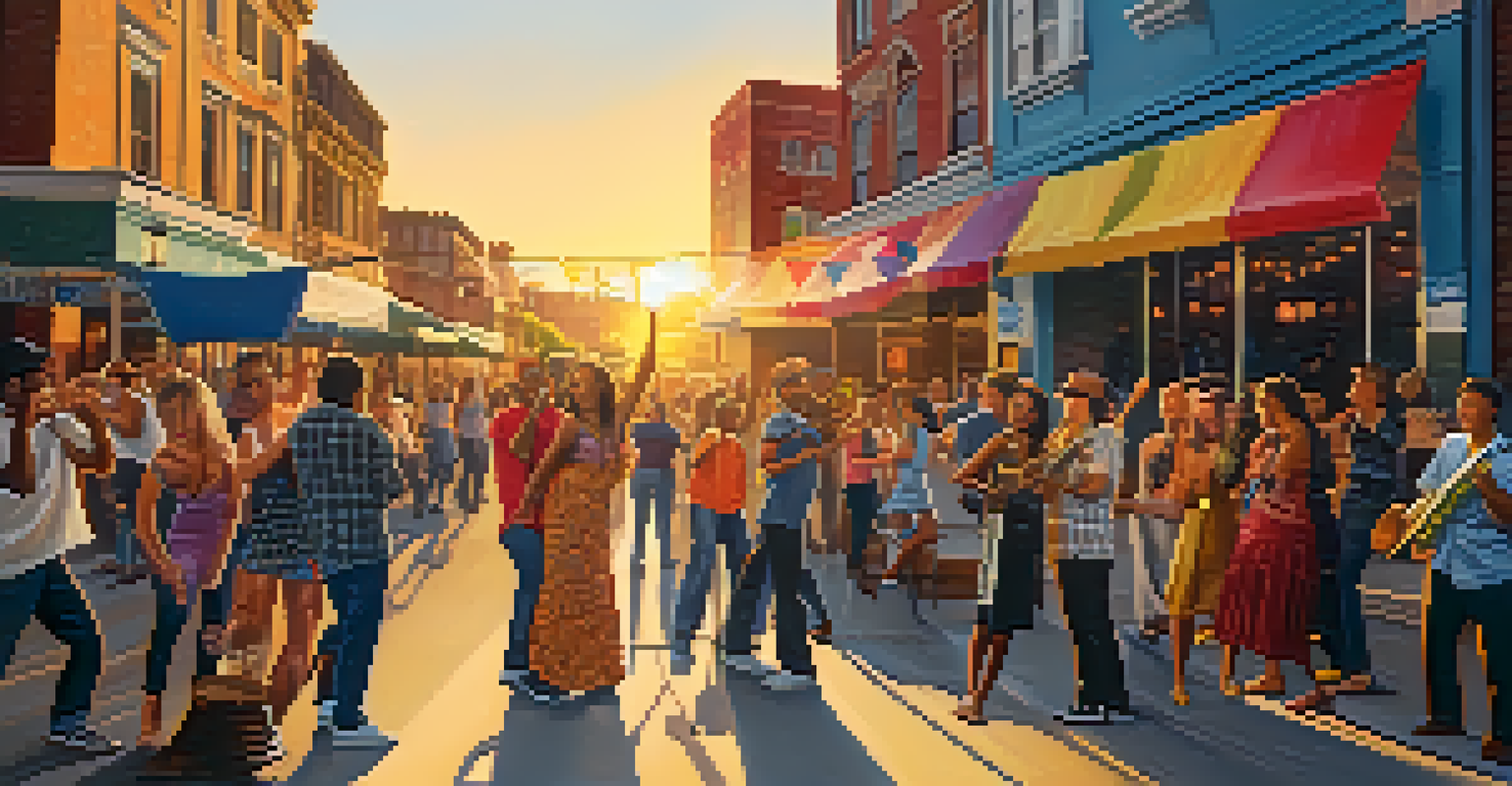The Rise of Independent Artists in the Digital Era

Understanding the Digital Shift in the Music Industry
The music industry has undergone a massive transformation thanks to digital technology. Gone are the days when artists depended solely on record labels to launch their careers. Today, platforms like Spotify and SoundCloud allow musicians to upload their work directly, reaching global audiences without the need for a middleman.
The future of music is in the hands of the artists, who can now take control of their own destinies thanks to digital technology.
This shift not only democratizes music distribution but also empowers artists to control their branding and marketing. Artists can now connect with fans through social media, creating a personal relationship that was hard to imagine in the past. This direct engagement enhances their ability to build a loyal following.
Moreover, the rise of independent artists has encouraged a diverse range of music styles and genres. With fewer gatekeepers, creativity flourishes, allowing unique voices to emerge. This vibrant landscape benefits listeners, who now have access to an array of music that reflects a multitude of cultures and experiences.
The Role of Social Media in Artist Promotion
Social media platforms like Instagram, TikTok, and Twitter have become indispensable tools for independent artists. They serve not just as promotion channels but also as platforms for creativity and interaction. Artists can share snippets of their music, behind-the-scenes content, or even personal stories that resonate with their audience.

This engagement fosters a sense of community, making fans feel more connected to the artist. For instance, viral trends on TikTok have propelled many independent songs to chart-topping status, showcasing how a simple video can lead to massive exposure. Such organic marketing often proves more effective than traditional advertising.
Digital Platforms Empower Artists
Artists can now reach global audiences directly through platforms like Spotify and SoundCloud, eliminating the need for traditional record labels.
Additionally, social media allows artists to gather instant feedback on their work. This real-time interaction helps them understand their audience's preferences, guiding their future projects. In this way, social media acts as a powerful tool for growth, creativity, and collaboration.
Crowdfunding: The New Age of Music Financing
Crowdfunding has revolutionized how independent artists finance their projects. Platforms like Kickstarter and Patreon enable artists to raise funds directly from their supporters, allowing them to produce music, videos, or even organize tours without relying on traditional financing methods. This model empowers fans to take an active role in the success of their favorite artists.
Social media has transformed the way artists connect with their fans, creating a community that was once unimaginable.
By contributing to crowdfunding campaigns, fans often receive exclusive rewards, such as early access to music or unique merchandise. This not only strengthens the artist-fan relationship but also creates a sense of ownership among supporters. They feel invested in the artist's journey, leading to lifelong loyalty.
Moreover, successful crowdfunding campaigns can provide artists with the necessary resources to experiment and innovate. Without the pressure of a record label dictating terms, artists can explore new sounds and styles, ultimately enhancing the richness of the music landscape.
The Impact of Streaming Services on Music Consumption
Streaming services have changed the way we consume music, providing listeners with instant access to vast libraries of songs. This convenience has affected how independent artists distribute their music, allowing them to experiment with releases and promotional strategies. For example, many artists now release singles more frequently rather than waiting to compile an entire album.
These platforms also offer valuable analytics, giving artists insights into their listeners' behaviors and preferences. Understanding where their audience is located, what songs they love, and how often they listen can help artists tailor their marketing strategies. This data-driven approach allows for more effective outreach and engagement.
Social Media Enhances Fan Engagement
Social media allows artists to create a personal connection with fans, facilitating community building and organic marketing.
Furthermore, the rise of curated playlists has given independent artists unprecedented visibility. Being featured on popular playlists can skyrocket an artist's career, exposing their music to potential fans who may not have discovered them otherwise. This shift highlights the importance of networking and relationship-building within the streaming ecosystem.
Building a Brand: The Artist as Entrepreneur
In the digital era, independent artists are not just musicians; they are also entrepreneurs. To thrive, they must think beyond their art and build a brand that reflects their identity and values. This multifaceted approach includes everything from merchandise and visuals to social media presence and fan engagement.
Many artists now collaborate with graphic designers and marketing professionals to create a cohesive brand strategy. This helps them stand out in a saturated market and attract a dedicated fan base. For instance, the visual aspect of an artist's work—from album covers to social media graphics—plays a crucial role in capturing attention and conveying their message.
Additionally, artists are increasingly taking control of their revenue streams by diversifying their income sources. This could include live performances, merchandise sales, and even licensing their music for film and television. By adopting an entrepreneurial mindset, independent artists can create sustainable careers that allow them to focus on their passion.
Challenges Faced by Independent Artists Today
While the rise of independent artists brings many opportunities, it also presents several challenges. The sheer volume of content available can make it difficult for new artists to stand out. With millions of songs uploaded daily, getting noticed requires strategic marketing and relentless perseverance.
Moreover, financial stability remains a significant concern for many independent artists. With income often fluctuating based on streaming royalties and live performances, budgeting and financial planning become crucial. Many artists struggle to find the balance between their creative pursuits and the practicalities of making a living.
Crowdfunding Fuels Artistic Freedom
Crowdfunding enables independent artists to finance their projects directly through fan support, fostering creativity and innovation without traditional constraints.
Finally, the pressure to constantly engage and produce content can lead to burnout. Artists must find ways to maintain their mental health while navigating the demands of the digital landscape. Building a supportive network and prioritizing self-care are essential steps toward sustaining a long-term career in music.
The Future of Independent Artists in the Digital Landscape
Looking ahead, the future seems bright for independent artists in the digital landscape. As technology continues to evolve, new opportunities for creativity and connection will arise. Innovations like virtual reality concerts, immersive experiences, and AI-driven music creation could further enhance how artists engage with their fans.
Moreover, as more artists successfully navigate the challenges of the digital world, we can expect to see an increase in collaboration across genres and platforms. This collaborative spirit can lead to exciting new sounds and artistic expressions that push the boundaries of traditional music.

Ultimately, the rise of independent artists represents a shift toward a more inclusive and diverse music industry. As artists continue to break free from conventional constraints, they pave the way for future generations to express themselves authentically and share their stories with the world.